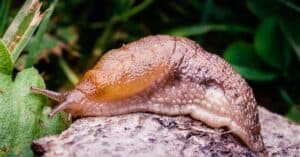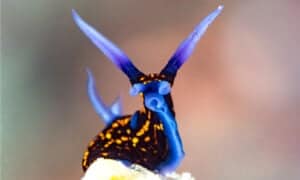The slug is not a species, but a name used to describe hundreds, maybe thousands of species. A slug is any gastropod mollusk that lives on land and has little or no shell. Slugs with shells are called snails.
This term, slug, is polyphyletic. It applies to a group of living organisms linked under one name due to a common characteristic. It is not a species as the linked organisms don’t share a common ancestor.

Slugs come in all shapes, lengths, and even colors. Given this, it goes without saying why so many people are passionate about them and even have them as pets. If you’re also interested in these amazing creatures, here are 10 incredible slug facts that will impress you!
1. Slugs Generate Their Mucus to Survive
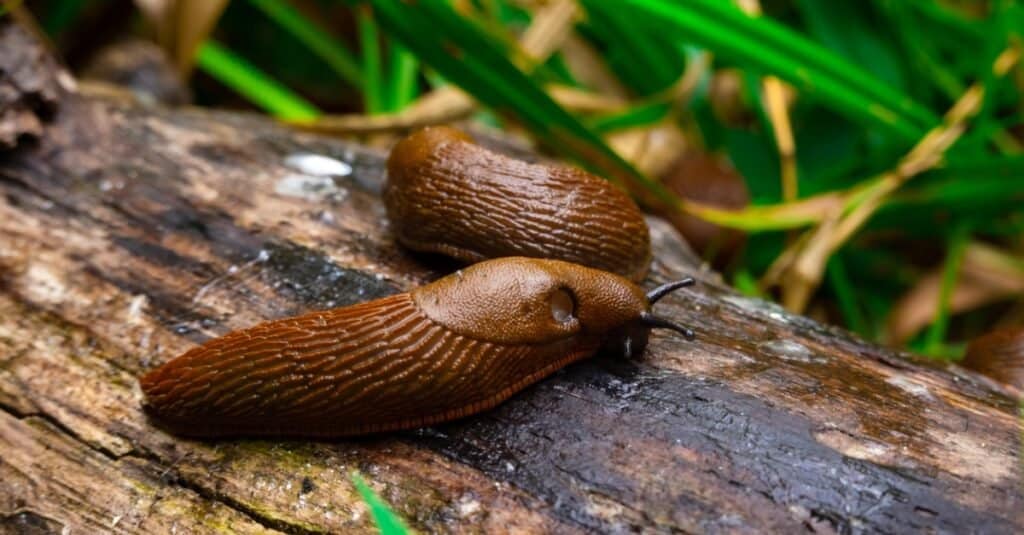
A slug’s body is around 80 to 90% water.
©iStock.com/Ja’Crispy
A slug’s body is around 80 to 90% water. As a result, it is susceptible to desiccation (extreme dryness), which is worsened by the fact that slugs have little or no shells. They keep themselves alive by generating layers of protective mucus. But this is often not enough to ensure survival.
As such, just like snails, slugs can be seen mainly after rain. The ground is moist, and they can move freely without being exposed to temperatures that would dry them out. Slugs are found under rocks, planters, logs, and tree bark when the ground is dry. There, humidity persists, and slugs can retain their body moisture better.
2. Slugs Generate Different Types of Mucus
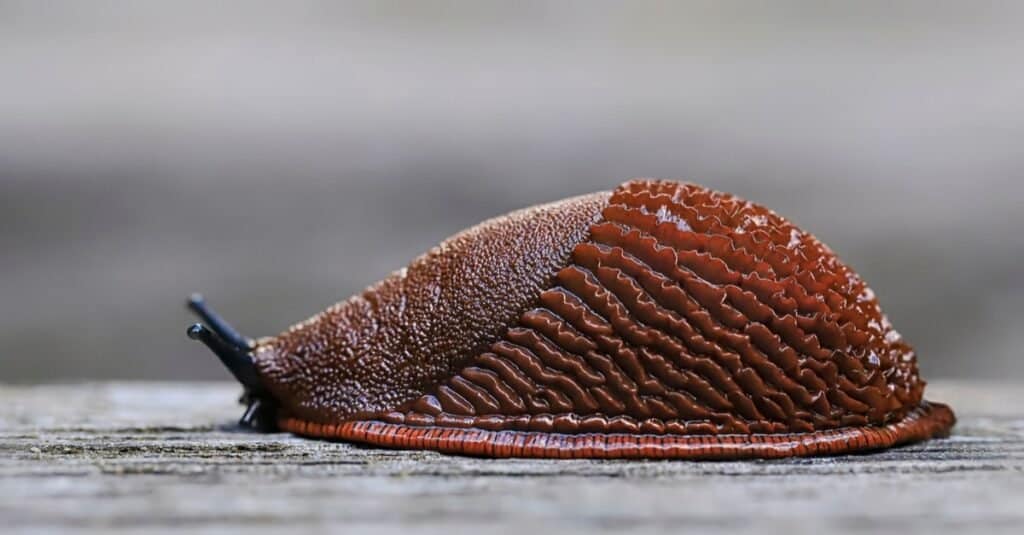
The slug’s body mucus helps with survival in all cases. It prevents dryness and keeps the body slippery enough to squeeze out predators’ beaks or mouths.
©Marek Mierzejewski/Shutterstock.com
Mucus is essential in a slug’s life. Two types of mucus can be found on the feet of the slug. One type is thin, watery, and found from the center of the foot to the edges. The other is thick and sticky and spreads from the front of the foot to its back. These types are rich in fibers, which keep the slug from slipping on vertical surfaces.
The slug’s body mucus helps with survival in all cases. It prevents dryness and keeps the body slippery enough to squeeze out predators’ beaks or mouths. A slug’s body coating can also have a bad taste to deter predators further.
3. Slugs Move at a Top Speed of 0.18 Miles per Hour (0.3 kmph)
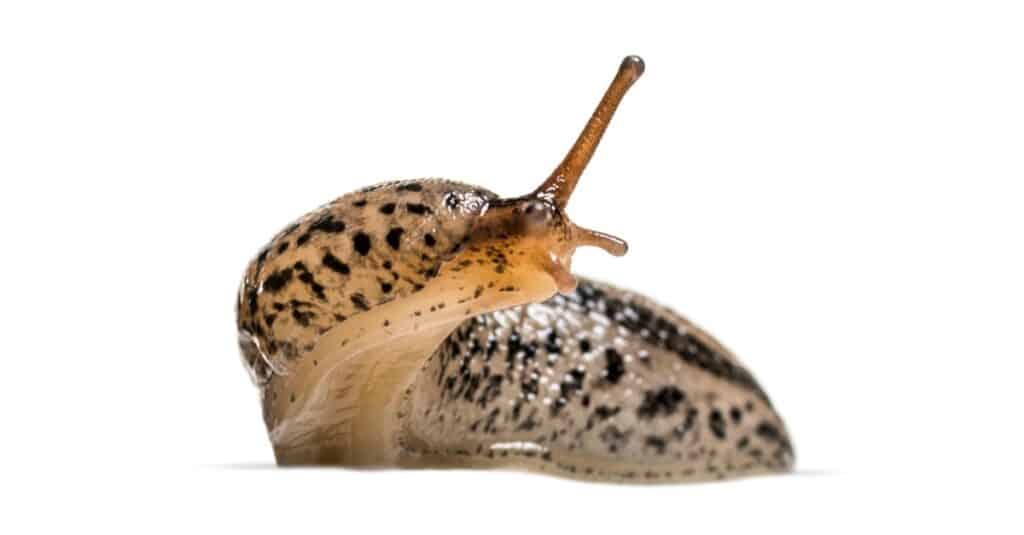
which
translates to the ‘biggest slug’, is known by the common names great grey slug and
leopard
slug.
©Eric Isselee/Shutterstock.com
Some would add that even if quite slippery, slugs are very, extremely slow. Their top speed is 0.18 miles per hour (0.3 kilometers per hour). For example, trained humans can walk around 20-30 miles (32-48 kilometers) daily, averaging 26.2 miles (42.1 kilometers) per 8 hours. A slug would need a little over 6 days, or 145 hours, to walk the same distance.
In other words, the world is pretty much standing still for them! Still, this doesn’t make them any less interesting or incredible.
4. Slugs Have Four Multi-Functional Tentacles
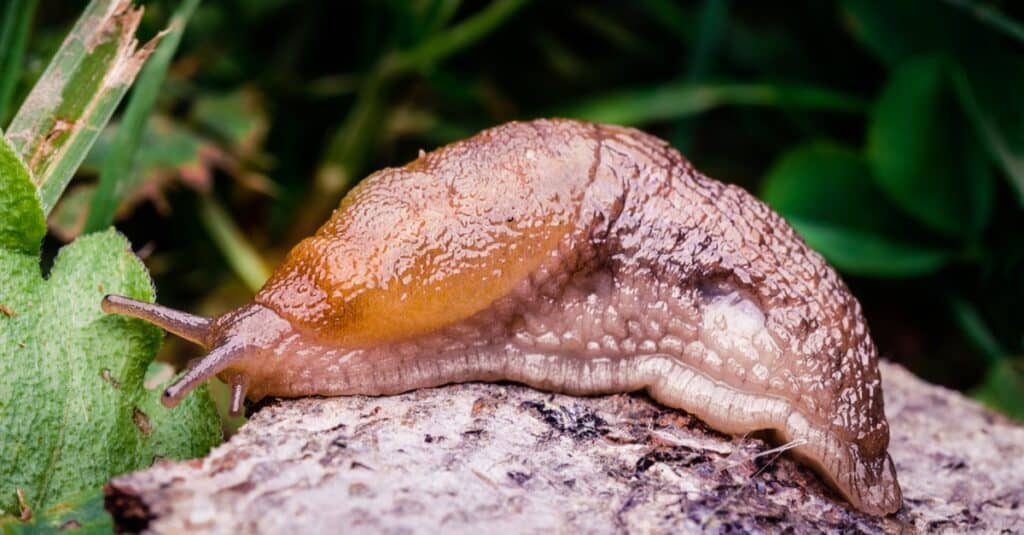
Every slug features four tentacles that are split into pairs.
©scott conner/Shutterstock.com
Arguably the most interesting body parts of a slug are its tentacles. Every slug features four of them, and all are retractable – which is why most of the time, you see only two. The tentacles are split into pairs. Two are designed for seeing and smelling, and two for tasting and touching.
The tentacles responsible for a slug’s sight and smell can be operated independently. In short, a slug can look at you and simultaneously smell the surface it’s walking on.
A slug’s tentacles are also quite sensitive, as with snail tentacles. When touched, they quickly retract.
5. Slugs Can Get as Heavy as 32.2 Pounds (14.6 kg)
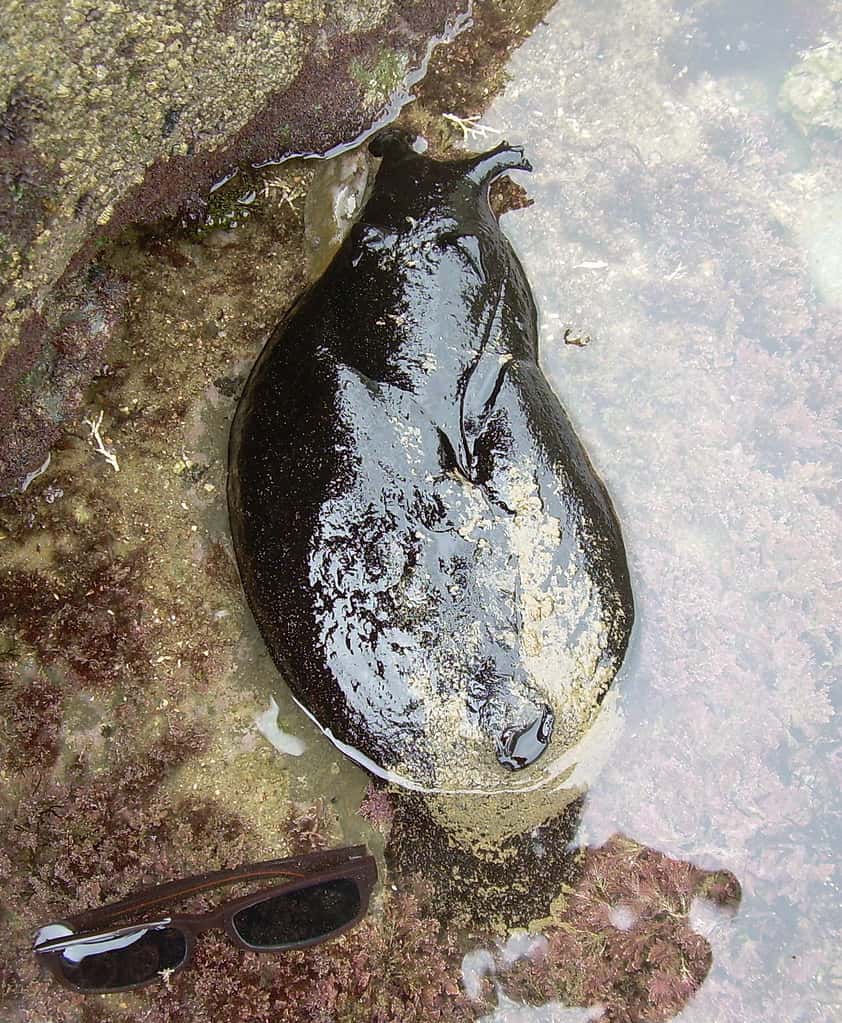
The Californian black sea hare can grow up to 40 inches long and weigh up to 30 pounds.
©Kennethcgass at English Wikipedia, CC0 – Original / License
Given that slugs worldwide are not animals of the same species but share the same characteristics, it’s clear that certain species can break records in the animal kingdom. The European ashy-gray slug can grow as long as 10 inches (around 25 centimeters). The largest slug in the US is the banana slug, which can grow up to 1 foot (32 centimeters) long. You might think it’s not impressive, but imagine coming across something like that while trekking.
Sea slugs, on the other hand, can get quite big. The Californian black sea hare can grow up to 40 inches (101 centimeters) long and weigh up to 30 pounds (13.6 kilograms).
6. Slugs Can be Incredible Predators

Land slugs usually follow the mucus trail left by another slug when hunting other slugs.
©Art_Pictures/Shutterstock.com
Most slugs enjoy fruits, plants, and the like. Some would rather go on a hunt and have acquired a taste for other living organisms. The ghost slug, for instance, is known to enjoy a daily meal of worms. Sea slugs also like to hunt, with some attacking fellow slugs like Pleurobranchaea californica.
Land slugs usually follow the mucus trail left by another slug when hunting other slugs. The mucus trail determines whether their prey is of the same species.
7. Slugs use Parts of Their Body as Bait When Escaping Predators

The land slug known as the taildropper slug can amputate its tail and then flee to safety.
No, we aren’t talking about lizards whose tails drop when in danger! Slugs have a similar strategy that they rely on when trying to escape a predator. The land slug known as the taildropper slug can amputate its tail and then flee to safety. On the other hand, some sea slugs are fitted with body parts that can snap off in dire situations.
Many land slugs are not capable of self-amputation.
8. All Slugs Can Lay Eggs
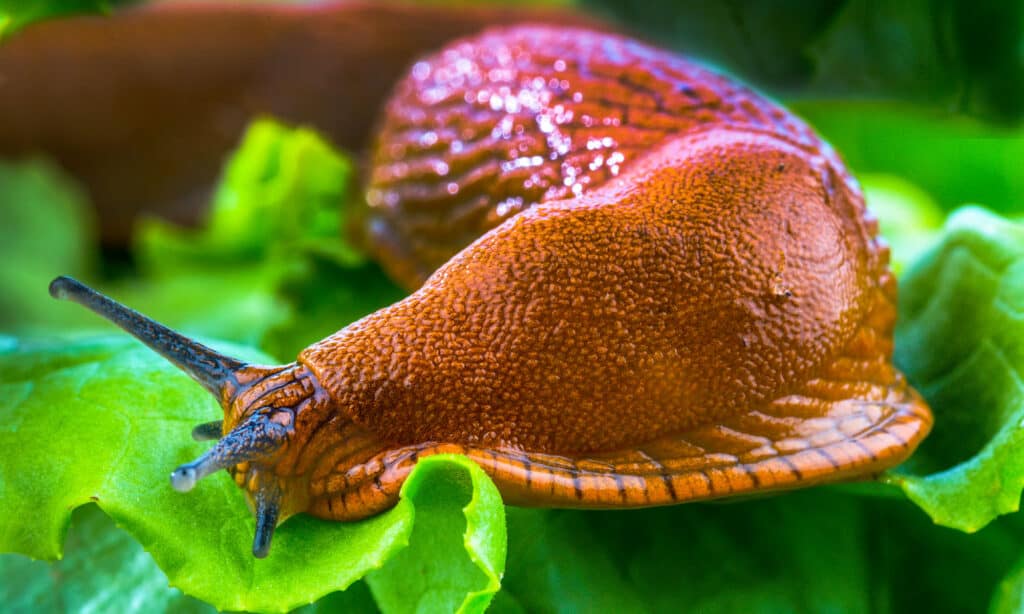
Slugs are hermaphrodites, meaning they have both male and female reproductive organs.
©Lisa-S/Shutterstock.com
Slugs are hermaphrodite animals. This means that they are equipped with both female and male reproductive organs. As a result, slugs can fertilize their eggs. Even so, some species of slugs now face extinction. This is even more worrying, considering that a slug can lay up to 500 eggs every single year and that eggs can survive for several years before hatching.
9. The Slug’s Body – The Foot – is a Huge Muscle
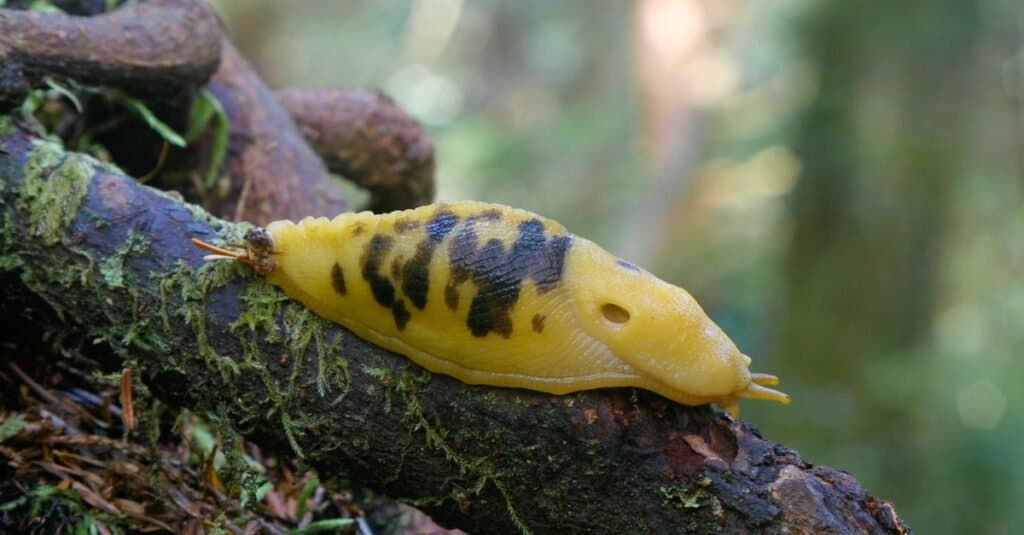
Banana slugs are decomposers and play an important role in their ecosystem.
©Steffen Foerster/Shutterstock.com
The slug’s body, also known as the foot, is not just a succulent piece of meat targeted by predators. It is a slug’s main method of transportation. It is a huge muscle featuring more muscles on the underside. Each of the latter contracts when needed, forming a wave that helps the slug move forward (as the wave goes from the back to the front).
10. Slugs do not Have Bones
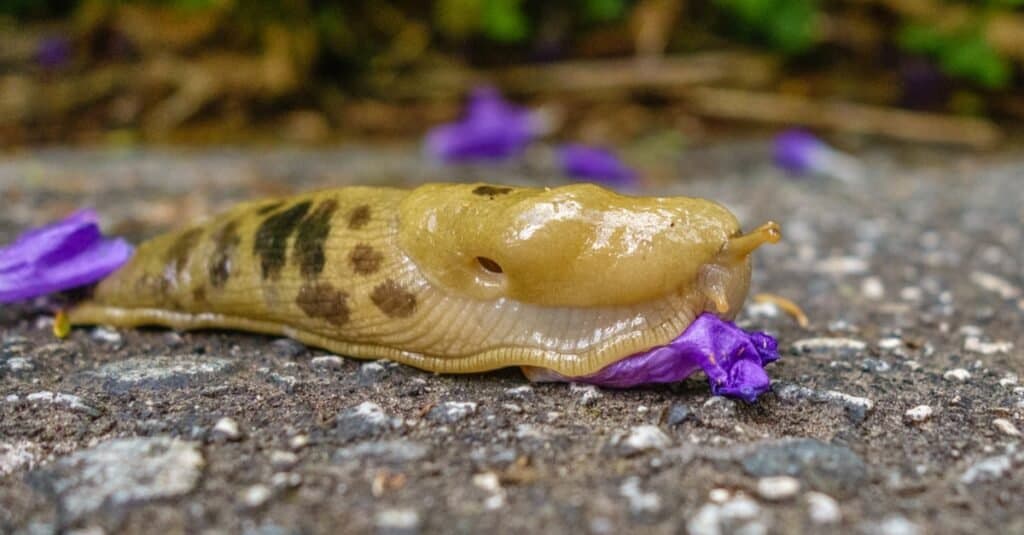
Slugs don’t have a backbone or vertebral column.
©Heidi Besen/Shutterstock.com
Slugs are mollusks, as mentioned earlier. Mollusks are invertebrate animals–they don’t have a backbone or vertebral column. Slugs, however, don’t have any bones either. After all, having them would be painful for the slug!
During their development, slugs experience torsion. This phenomenon marks a 180-degree twisting of a slug’s internal organs. The main result is an asymmetrical body. Torsion would break a slug’s bones if it had any.
Thank you for reading! Have some feedback for us? Contact the AZ Animals editorial team.





